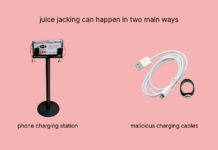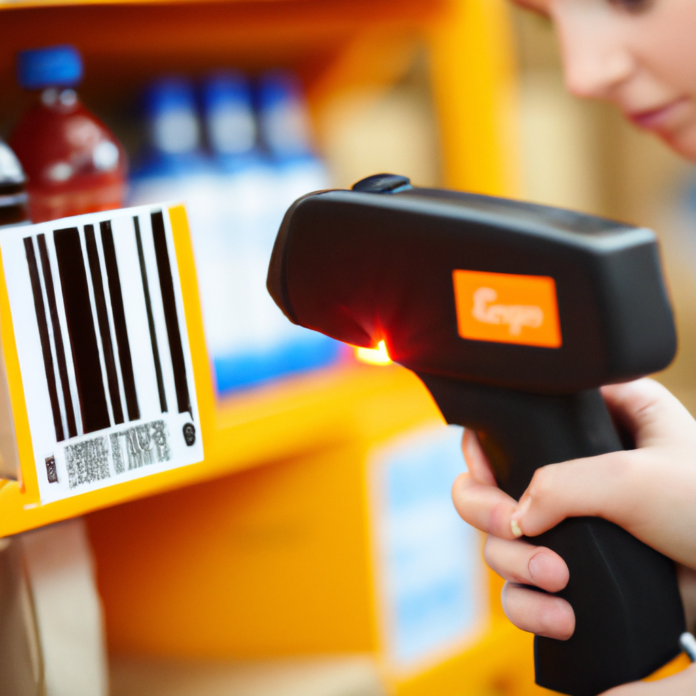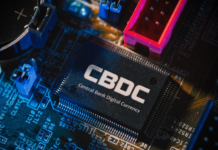A barcode is a machine-readable code consisting of a series of black and white bars and spaces. The code is used to identify a product. A barcode scanner can read the code and input the information into a computer. There are several different types of barcodes. The most common type is the Universal Product Code (UPC). UPC barcodes are used in the United States and other countries. Other types of barcodes include the European Article Number (EAN) and the International Standard Book Number (ISBN). To create a barcode, you will need a barcode generator. There are several different barcode generators available online. The generator will create the barcode based on the information you provide. You will need to provide the following information to create a barcode: -The product’s name -The product’s manufacturer -The product’s category -The product’s weight -The product’s price. Once you have entered the information, the generator will create a barcode based on your provided information. You can print the barcode out or save it as a digital image.
Introduction
A barcode is an optical machine-readable representation of data relating to the object to which it is attached. Modern barcodes can be used to store information such as product names, prices, and stock information. Barcodes are widely used in retail environments and are becoming increasingly common in other industries, such as healthcare and transportation.
There are a few different barcodes, but the Universal Product Code (UPC) is the most common. UPCs are used on nearly all retail products in the United States. In Europe, the most common barcode is the European Article Number (EAN).
Creating a barcode for your products is a fairly simple process, but there are a few things to keep in mind. First, you’ll need to decide which type of barcode you want. UPCs and EANs are the most common, but other options are available. Once you’ve decided on a barcode type, you’ll need to get your barcode printed on labels or tags. You can use a barcode printer or outsource the printing to a professional printing company. Finally, you’ll need to apply the barcodes to your products.
There are a few different ways to create barcodes for your products. You can use a barcode generator to create UPCs and EANs or purchase barcode labels from a professional printing company.
If you decide to use a barcode generator, there are a few things to keep in mind:
- Ensure that the generator you choose supports the type of barcode you want. UPCs and EANs are the most common, but other types are available.
- Be sure to enter the correct product information into the generator. This includes the product name, price, and stock information.
- Print the barcodes on labels or tags and apply them to your products.
What is a Barcode?
A barcode is an optical machine-readable representation of data relating to the object to which it is attached. Originally barcodes systematically represented data by varying the widths and spacings of parallel lines and may be referred to as linear or one-dimensional (1D). Later they evolved into rectangles, dots, hexagons, and other geometric patterns in two dimensions (2D). Barcodes were originally scanned by special optical scanners called barcode readers. Later, they were scanned by digital cameras.
The machine-readable code consists of a series of printed bars and spaces that an optical scanner can read. The bars and spaces are often used to represent numbers and characters. The scanner interprets the widths of the bars and spaces to determine the sequence of numbers and characters.
Barcodes are used in many industries, including retail, manufacturing, and healthcare. They are used to track inventory, products, and assets. Barcodes also manage and control access to buildings and other facilities.
There are two main types of barcodes: linear (1D) and two-dimensional (2D). Linear barcodes are the most common type. They encode alphanumeric data, such as product names and prices. Two-dimensional barcodes encode more complex data, such as website addresses and contact information.
Linear barcodes are printed on labels that are affixed to products. They are read by optical scanners called barcode readers. Barcode readers emit a beam of light reflected off the bars and spaces of the barcode. The barcode reader interprets the widths of the bars and spaces to determine the sequence of numbers and characters encoded in the barcode.
Two-dimensional barcodes are printed on labels or tags that are affixed to products. Digital cameras read them. The cameras take pictures of the barcodes and interpret the patterns of bars and spaces to determine the sequence of numbers and characters encoded in the barcode.
How to Create Barcodes for Products?
Barcodes are an essential part of any product labeling system. They provide a quick and easy way to identify and track products. Barcodes can track inventory, prices, and other product information. There are a few different ways to create barcodes for products.
One way to create barcodes is to use a barcode printer. Barcode printers are specialized printers that can print barcodes on labels or tags. They usually come with software that allows you to design and print barcodes. Barcode printers are available in a variety of sizes and price ranges.
Another way to create barcodes is to use a barcode generator. Barcode generators are software programs that allow you to create barcodes. Barcode generators are typically less expensive than barcode printers. They usually come with a variety of templates that you can use to design your barcodes.
Once you have created your barcodes, you will need to print them. You can print barcodes on labels or tags using a regular printer. However, you will get the best results if you use a barcode printer. Barcode printers are designed to print barcodes at high resolutions. This will ensure that your barcodes are clear and easy to scan.
Why is a Barcode Important for Products?
A barcode is a machine-readable code in the form of numbers and a pattern of parallel lines of varying widths printed on a product or its packaging that provides information about the item. Barcodes are used to track inventory, price items at the point of sale, and automate other tasks in the supply chain.
There are four main reasons why barcodes are important for products:
1. Barcodes save businesses time and money
Barcodes streamline the process of tracking inventory and pricing products, which saves businesses time and money. Barcodes can be scanned quickly and easily, which reduces the chances of human error.
2. Barcodes improve customer service
Barcodes can be used to track customers’ purchase history and preferences, which helps businesses to provide better customer service. Barcodes can also be used to redeem coupons and loyalty rewards.
3. Barcodes make products more convenient
Barcodes make it possible to track products from manufacture to sale, which helps to ensure that products are of the highest quality when they reach the customer. Barcodes also make it easier for customers to find the products they need and make purchases.
4. Barcodes are environmentally friendly
Barcodes can help businesses to reduce paper waste by replacing paper labels with digital barcodes. Barcodes can also be used to track recycling and waste management.
How to Use Barcodes for Products?
Barcodes are a great way to track your inventory and ensure that your products are properly identified. You can use barcodes for your products in a few different ways.
1. Use a barcode scanner to scan the barcodes on your products. This will allow you to track your inventory and ensure that your products are properly identified.
2. Use a barcode printer to print barcodes for your products. This is a great way to get professional-looking barcodes for your products.
3. Use a barcode generator to create barcodes for your products. This is a great way to create custom barcodes for your products.
4. Use barcode software to create barcodes for your products. This is a great way to create custom barcodes for your products.
5. Use a barcode system to track your inventory and identify your products properly. This is a great way to track your inventory and ensure that your products are properly identified.
Conclusion
Barcodes have become an essential part of our lives, whether we realize it or not. They are on every product we purchase from the grocery store and are used to track inventory for businesses. But what exactly are barcodes, and how do they work?
Barcodes are simply a way to encode information in a visual format that a machine can read. The most common barcode type is the Universal Product Code (UPC), which tracks products in stores. UPCs comprise a series of black and white bars of varying widths. The bars represent numbers, which are read by a scanner that is connected to a computer. The computer then looks up the product in a database and displays the price and other information on a screen.
Barcodes have revolutionized the way businesses track inventory and sell products. They have also made it possible for consumers to purchase items without knowing the price beforehand. We need to scan the barcode, and the price is automatically displayed.
Barcodes are an essential part of our modern world and will continue to be for the foreseeable future.


















